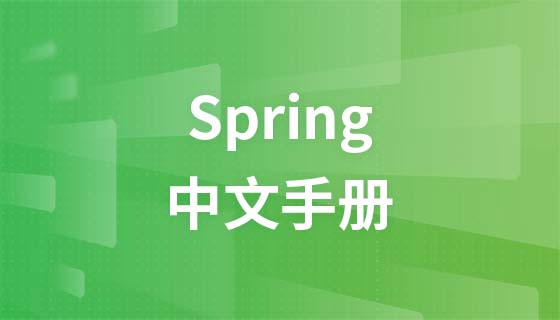
Spring中AOP的常见应用方式解析
引言:
在软件开发过程中,面向切面编程(AOP)是一种很重要的技术,它能够通过在程序运行期间动态地将特定的代码片段织入到目标方法中,提供额外的功能和扩展。而Spring作为一个强大的开发框架,提供了丰富的AOP支持,本文将详细介绍Spring中AOP的常见应用方式,包括声明式和编程式两种方式,并提供具体的代码示例。
一、声明式AOP使用方式
<aspectj-autoproxy></aspectj-autoproxy>配置添加到Spring配置文件中,以启用基于注解的AOP支持。然后,可以使用@Aspect注解来定义切面,并结合@Before、@After、@Around等注解来定义通知类型。下面是一个简单的示例:@Aspect
public class LoggingAspect {
@Before("execution(* com.example.service.*.*(..))")
public void beforeLogging() {
System.out.println("Before executing service method");
}
@After("execution(* com.example.dao.*.*(..))")
public void afterLogging() {
System.out.println("After executing dao method");
}
@Around("@annotation(com.example.annotation.Loggable)")
public Object loggableAdvice(ProceedingJoinPoint joinPoint) throws Throwable {
System.out.println("Before executing method with @Loggable annotation");
Object result = joinPoint.proceed();
System.out.println("After executing method with @Loggable annotation");
return result;
}
}在上面的示例中,首先使用@Aspect注解来定义一个切面类LoggingAspect,然后使用@Before、@After和@Around注解分别定义了前置通知、后置通知和环绕通知。通过配置@Before注解中的execution属性,可以指定切点表达式,以确定哪些方法会被通知拦截。同样地,可以在@After和@Around注解中使用切点表达式。
<config></config>元素,并在其中声明切面和通知。下面是一个XML配置方式的示例:<aop:config>
<aop:aspect ref="loggingAspect">
<aop:before method="beforeLogging" pointcut="execution(* com.example.service.*.*(..))"/>
<aop:after method="afterLogging" pointcut="execution(* com.example.dao.*.*(..))"/>
<aop:around method="loggableAdvice" pointcut="@annotation(com.example.annotation.Loggable)"/>
</aop:aspect>
</aop:config>在上面的示例中,首先使用<config></config>元素包裹起来,然后使用<aspect></aspect>元素来声明切面类,并通过ref属性指定切面类的实例。接着,使用<before></before>、<after></after>和<around></around>分别定义了前置通知、后置通知和环绕通知,并通过pointcut属性指定切点表达式。

PHP5学习对象教程由美国人古曼兹、贝肯、瑞桑斯编著,简张桂翻译,电子工业出版社于2007年12月1日出版的关于PHP5应用程序的技术类图书。该书全面介绍了PHP 5中的新功能、编程方法及设计模式,还分析阐述了PHP 5中新的数据库连接处理、错误处理和XML处理等机制,帮助读者系统了解、熟练掌握和高效应用PHP。
 291
291

二、编程式AOP使用方式
除了声明式的方式,Spring AOP还提供了编程式的方式来实现切面和通知的定义。编程式AOP主要是通过ProxyFactory类来创建代理对象,并通过编码方式来定义切面和通知。下面是一个简单的示例:
ProxyFactory proxyFactory = new ProxyFactory();
proxyFactory.setTarget(new UserServiceImpl());
BeforeAdvice beforeAdvice = new BeforeAdvice() {
@Override
public void before(Method method, Object[] args, Object target) throws Throwable {
System.out.println("Before executing service method");
}
};
AfterReturningAdvice afterAdvice = new AfterReturningAdvice() {
@Override
public void afterReturning(Object returnValue, Method method, Object[] args, Object target) throws Throwable {
System.out.println("After executing service method");
}
};
proxyFactory.addAdvice(beforeAdvice);
proxyFactory.addAdvice(afterAdvice);
UserService userService = (UserService) proxyFactory.getProxy();
userService.addUser("John");在上面的示例中,首先创建一个ProxyFactory对象,并通过setTarget方法设置目标对象。然后,分别创建BeforeAdvice和AfterReturningAdvice对象,并在其中定义了前置通知和后置通知的逻辑。接着,使用addAdvice方法将切面逻辑添加到ProxyFactory对象的通知链中。最后,通过getProxy方法获取代理对象,并调用代理对象的方法。
总结:
本文详细介绍了Spring中AOP的常见应用方式,包括声明式和编程式两种方式,并提供了具体的代码示例。通过声明式方式的AspectJ注解和XML配置,以及编程式方式的ProxyFactory,开发人员可以方便地在Spring中使用AOP技术,并实现切面和通知的定义。在实际项目中,根据具体的需求和场景选择合适的方式,能够提高代码的复用性和可维护性,达到更好的开发效果。
以上就是解析Spring中常见的AOP应用方式的详细内容,更多请关注php中文网其它相关文章!

每个人都需要一台速度更快、更稳定的 PC。随着时间的推移,垃圾文件、旧注册表数据和不必要的后台进程会占用资源并降低性能。幸运的是,许多工具可以让 Windows 保持平稳运行。




Copyright 2014-2025 https://www.php.cn/ All Rights Reserved | php.cn | 湘ICP备2023035733号